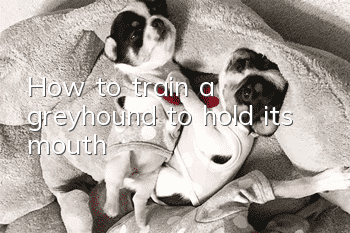How to raise a purebred Labrador puppy

Labrador feeding:
Labrador is a very easy-to-raise dog breed. It has no special requirements for diet and daily life. Except for some feeding matters that need to be paid attention to during its childhood, other things should be followed according to the daily dog-raising methods. Just feed it.
The growth rate of Labrador puppies should be appropriately slowed down, especially the weight, and the entire growth process of Labrador puppies is 18 months:
1. Don’t eat raw meat.
2. Give Lala a bath, usually rinsing with clean water once a month is enough. You can also clean it thoroughly with bath liquid an average of three times a year. The main way to remove lesbian body odor is to clean the ears and eyes.
3. The calf of Lala’s forequarters should be shorter.
4. The food bowl must be set up when feeding puppies.
5. Puppies (under 18 months old) should play less to avoid injury
2. Lesbian care:
Fur
Labrador is a dog breed that sheds very easily, so its fur care is very important during the breeding process.
First of all, you need to control hair loss through diet. You can add more crude fiber foods to its food, such as vegetables, etc. In addition, the residue of crushed soy products, such as the okara left over from making soy milk, is also a good food to prevent hair loss. In addition, you can give them some vitamin B series health products, so that the Labrador's fur can be bright and strong.
Sports
Labradors need a lot of exercise. Labradors are very active breeds. If you also need exercise and think this won't be a problem you're wrong. They require a lot of movement every day. Including rainy days, your overtime hours, and when you are sick, your little girl will still want to go out to run, walk, play ball, and swim. No matter what you usually do together, if you don’t give it a vent It may look elsewhere for its pent-up energy channels... Therefore, in the process of raising Labrador, sufficient exercise is necessary, and you need to sacrifice a lot of time to meet its needs. . You need to get up earlier and go to bed later than ordinary people. In addition, on weekends, if conditions permit, it is recommended that you take Lala to a wide place for a hike.
3. Attention:
Genetic diseases Like other purebred dogs, Lara is very likely to get hereditary diseases. Canine joint dysplasia, canine elbow joint formationPoor vision, heart problems, epilepsy and more. I won’t describe them one by one here. Before deciding to raise a Labrador, you need to inquire about this information in detail and ask some experts for advice. You don't have to worry too much.
However, it is still a cliché in the past. For large and medium-sized dogs, calcium supplementation is very important. Calcium supplementation plays a vital role in preventing the occurrence of hip dysplasia and hock joint dysplasia. Therefore, Lala should also start taking calcium supplements from the time of weaning. If conditions permit, calcium supplements should continue throughout their lives. It should continue at least during its developmental and reproductive stages.
Pay attention when feeding
① It must be done regularly, quantitatively and at a fixed location. Timing can develop the dog's timing conditioned reflex. Generally, adult dogs are fed twice a day, once in the morning and once in the evening, and slightly more at night. Those under 1 year old should be fed 3 times a day; those under 3 months old, fed 4 times a day; puppies under 2 months old, fed 5 times a day. The food pattern can be renovated, but the quantity should be relatively stable. The feeding location can be inside or outside the kennel, but dogs are generally fed in the kennel. The purpose of a fixed location is to keep the environment relatively stable and easy to manage. Some dogs will refuse to eat and lose appetite when changing feeding places.
② Except in summer, warm feed should be fed. The temperature of the feed should be around 40°C, not too cold or too hot; cold food can be fed in summer, and the feed must be heated in winter, preferably At about 35°C, it is better not to be hot to the touch. Feed that is too hot will not only affect the dog's appetite, but also burn the dog's teeth; food that is too cold will easily ruin the stomach.
③Each Lara tableware should be fixed and should not be used indiscriminately. When feeding multiple dogs, be especially careful not to exchange the food bowls of each dog to prevent the spread of disease. Wash after feeding and boil and disinfect regularly. A dog’s life is very regular, so it’s best to let Lala have her meal in its proper place.
④ Pay attention to the eating situation when feeding. If there is leftover food or no food, find out the cause and take timely measures. The leftover feed should be taken away immediately and should not be left for a long time for the dog to eat at any time.
⑤ Pay special attention to puppies and sick dogs. It is best to feed puppies 4 times a day. The food should be added from less to more, from worse to better. The fixed food amount should be added less and less, and it is not advisable to feed it very full. Sick dogs should be fed more liquid food, lean meat and eggs or irritating, easy-to-digest, nutritious sick food. Sick dogs should drink plenty of clean water.
⑥Do not let Lala do strenuous exercise before and after feeding.
- How to take the temperature of a Bichon Frize
- What's going on if the female dog doesn't feed the puppies milk?
- What procedures are required to transport pets on trains?
- How to separate male and female Chihuahuas
- Purebred Labrador puppy characteristics
- If a female dog has no milk, what should she eat to get milk?
- How do you tell whether a greyhound is pure or not?
- Does a beagle have a good temperament?
- What snacks do Husky puppies eat?
- What to do if your Chihuahua’s ears don’t stand up



